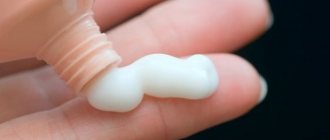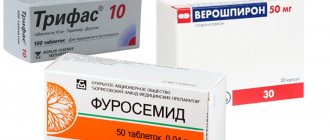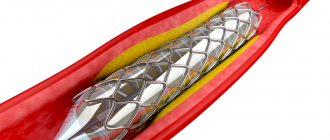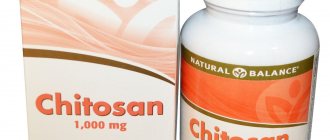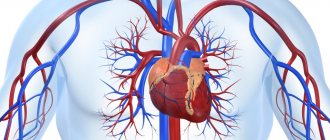The question of how to treat hemorrhoids at an advanced stage does not lose its relevance. To solve such a delicate problem, drugs are used in the form of tablets, capsules, rectal suppositories, gel ointments and microenemas. If the disease rapidly progresses and is accompanied by the formation of large venous nodes, then the person may be recommended minimally invasive or radical methods of treating this pathology.
General principles of hemorrhoid therapy
The process of formation of hemorrhoids is based on a complex physiological mechanism. The key factor in the development of hemorrhoids is the process of disruption of venous outflow from vascular formations located in the rectal area. In order for the treatment of hemorrhoids to be effective, it must be comprehensive. The general principles of treatment for this disease are as follows:
- Revision of the diet in favor of natural fortified foods containing plant fibers.
- Daily moderate physical activity.
- The use of medicinal drugs for external use and oral administration.
- Refusal to lift weights.
Hemorrhoids: types, stages, treatment
Shlosser Kirill Vladimirovich
Surgeon, Proctologist
April 30, 2021
Hemorrhoids are a pathological expansion of cavernous (that is, cavernous or spongy in structure) vascular plexuses located in the anus, with the formation of external and/or internal nodes.
Causes of hemorrhoids
- A lifestyle associated with prolonged static loads: hemorrhoids are an “occupational” disease of drivers, office workers, security guards, etc.
- Excessive physical activity, heavy lifting, sudden tension.
- Excessive consumption of alcohol, spicy and pickled foods.
- Constipation, straining with difficulty defecating (defecation).
- Pregnancy and childbirth.
- Heredity.
Symptoms of hemorrhoids
- Discomfort or pain in the anus.
- Sensation of a foreign body in the anal canal.
- Discharge of blood during bowel movements, blood in the stool.
- Nodes in the anal area.
Classification of the disease
Acute hemorrhoids are thrombosis of hemorrhoids. The external manifestation is a dense, painful external or internal bluish-colored node filled with a blood clot.
Acute hemorrhoids are divided into three degrees of severity:
I degree – Thrombosis of external or internal hemorrhoids without an inflammatory process.
II degree – Thrombosis, complicated by inflammation of hemorrhoids.
III degree – Thrombosis of hemorrhoids, complicated by inflammation of the subcutaneous tissue in the perianal area.
Therapeutic tactics involve both complex conservative treatment and surgical treatment.
The indication for surgical treatment is acute thrombosis of the hemorrhoid. In the early stages of the disease, optimally up to 72 hours, thrombectomy is indicated - removal of thrombotic masses. Performed on an outpatient basis. The operation leads to a significant reduction in treatment time.
In later stages, either removal of the thrombosed node or conservative treatment followed by planned surgery is possible. Hospitalization is indicated for stage III of the disease, when the inflammatory process spreads to the surrounding tissues of the perianal region and anal canal.
Stages of disease development
Chronic hemorrhoids are divided into four stages.
Characteristic symptoms:
Stage I – Periodic bleeding from the rectum without prolapse of hemorrhoids. The method of treatment is conservative therapy.
Stage II - Hemorrhoids fall out during defecation, but are reduced on their own. There may or may not be bleeding. It is also possible for nodes to fall out during intense physical activity.
The second stage combines conservative treatment and minimally invasive proctological manipulations, which are carried out by Medical specialists in an outpatient setting.
Stage III – Manual assistance is required to reduce the nodes into the anal canal. Bleeding becomes more profuse, and periodic inflammation of the hemorrhoids is observed.
Treatment is surgical. The operations are performed by proctological surgeons at the Medical Outpatient Surgery Center.
IV – Hemorrhoids are constantly in a prolapsed state. This is the most difficult stage. Prolapse occurs even with the slightest stress: change in body position, coughing, release of gas from the intestines. The walls of the node are constantly injured and inflamed.
Only surgical treatment is indicated.
Treatment of hemorrhoids
Methods for diagnosing proctological diseases
- During an external examination, the doctor pays attention to the shape of the anus, its gaping, scar changes or deformations, fistulous openings, the condition of the skin and mucous membrane of the anal canal when straightening the folds. It determines the severity of external hemorrhoids, the stage of the disease, the degree of bleeding and prolapse of the nodes, the possibility of their independent reduction into the anal canal, and evaluates the anal reflex.
- Digital examination helps determine the tone of the sphincter, the presence of neoplasms, mucosal defects and the degree of their pain.
- Anoscopy is performed using a special disposable anoscope device, which allows you to examine the inner surface of the rectum and anal canal up to 10 cm. The procedure is painless, preparation is not required. Using anoscopy, a proctologist can assess the condition of internal hemorrhoids, the presence of inflammatory changes in the mucosa, detect anal canal polyps, mucosal defects, blood clots and possible sources of bleeding.
- Sigmoidoscopy is an examination of the rectum and distal sigmoid colon up to 25 cm using a special endoscopic device that allows you to assess the condition of these sections from the internal lumen of the intestine.
Thanks to a complex of diagnostic tests, a specialist can identify not only hemorrhoids, but also concomitant diseases.
Conservative treatment of hemorrhoids
The therapy is based on a specialized diet aimed at normalizing stool. The patient's diet should include foods rich in plant fiber and plenty of liquid. The doctor also prescribes medications that stimulate bowel movements.
To relieve inflammation, ointments, creams and suppositories with an anti-inflammatory combined effect are used. Therapy is supplemented by taking phlebotonics - drugs that increase the tone of the vascular wall.
In case of severe bleeding, local and general hemostatic (hemostatic) agents are prescribed.
For the conservative treatment of hemorrhoidal thrombosis, combined local agents with analgesic, anti-inflammatory, absorbable, and decongestant effects are used.
Minimally invasive methods of surgical treatment of hemorrhoids
- Sclerosation of hemorrhoids
Indications for surgery are chronic hemorrhoids of stages I–II, accompanied by bleeding.
A special substance – sclerosant – is injected into the lumen of the hemorrhoid using the thinnest injection needles. This drug glues the walls of the vessels inside the node, preventing further progression of the pathology. The operation is performed in an outpatient clinic.
Contraindications:
– Thrombosis of hemorrhoids
– Paraproctitis
– Anal fissure
- Ligation of internal hemorrhoids
Indicated for chronic hemorrhoids of degrees II and III, if the nodes are located separately from each other and have clearly defined boundaries.
The operation is performed in an outpatient setting. A latex ring (ligature) is placed on the base of the internal node, the nutrition of the node is disrupted and it is rejected along with the ligature after 7-10 days. Ligation of several nodes at once can cause pain, low blood pressure and bradycardia in the patient, so the procedure is usually performed at 2-3 week intervals.
Surgical treatment methods performed at the Medical Center
- Laser vaporization of hemorrhoids
It is performed for chronic hemorrhoids of stages II and III. Also suitable for the treatment of small external hemorrhoids. The operation is performed using a Milon-Lakhta surgical laser, which destroys (evaporates) fluid-rich hemorrhoidal tissue, while preserving the mucous membrane. The light guide is inserted into the lumen of the internal hemorrhoid through a small 1-2 mm puncture of the anoderm. The manipulations are performed under general anesthesia in the Outpatient Surgery Center of our clinic.
Advantages of the technique:
– Reduced operation time.
– Significant reduction in pain intensity in the postoperative period compared to classic hemorrhoidectomy.
– Significant reduction in the healing time of surgical wounds and punctures.
– More comfortable course of the postoperative period and rapid recovery of work capacity.
Contraindications:
– Stage IV hemorrhoids
– Purulent and oncological diseases of the rectum
- The Milligan-Morgan hemorrhoidectomy operation is indicated for stages III–IV of chronic hemorrhoids
There are two main types of hemorrhoidectomy: open and closed.
Open surgery is performed under general anesthesia in the operating room. The doctor alternately stitches and ties the vascular legs of the nodes and then removes the external and internal hemorrhoids. Postoperative wounds are not sutured. Next, the surgical site is injected with a local anesthetic, and an absorbable tampon with an anesthetic is placed in the anal canal.
A closed operation is performed in the same way as an open operation, but after removing the nodes, the wounds of the anal canal are sutured with absorbable suture material.
Also, a similar operation is performed using a high-frequency ligation device LigaSure. It is considered open. LigaSure allows the operation to be performed almost bloodlessly, since the device automatically coagulates (seals) large vascular formations that make up the hemorrhoid. The nodes are excised down to the vascular pedicle, and after “welding” the pedicle, they are finally removed.
Advantages of the technique:
– The operation goes faster.
– Reduced blood loss during surgery.
– The risk of bleeding in the postoperative period is reduced.
– Recovery after surgery is faster.
Postoperative treatment of hemorrhoids takes place in an outpatient clinic. The proctologist observes, makes dressings, gives nutritional recommendations and prescribes medications for the recovery period.
Experienced medical proctologists will be happy to help you solve your problems.
Drug treatment
The maximum effectiveness of therapy for hemorrhoids and medications is observed if drugs for external use and oral administration are used in combination.
The following names of medications are prescribed for oral administration:
- Detralex. The active components of the drug are hesperidin and diosmin, which effectively strengthen the walls of blood vessels and enhance the tone of cavernous veins. When using the drug Detralex at an early stage of the development of hemorrhoids, it is possible not only to completely get rid of the characteristic symptoms of the disease, but also to completely cure it.
- Aescusan. The pharmacological effect of this product is due to the inclusion of thiamine (vitamin B1) and natural horse chestnut extract in its composition. The drug is a herbal venotonic that has angioprotective, anti-inflammatory, antioxidant and decongestant effects.
- Troxevasin. This drug belongs to the category of classical venotonic agents with angioprotective properties. The active component of Troxevasin is the substance Troxerutin, which reduces the permeability of the walls of blood vessels, thereby eliminating signs of the inflammatory process.
- Phlebodia-600. The therapeutic effect of the drug Phlebodia-600 is due to the content of diosmin, which has angioprotective, anti-edematous and anti-inflammatory properties. The ability of the drug Phlebodia-600 to improve microcirculation in the blood vessels of the anorectal area has been clinically proven.
Best astringents for hemorrhoids
Hemorrhoids are accompanied by the formation of exudate, which penetrates the walls of damaged tissues and blood vessels, which can cause infection of the blood and adjacent organs.
To avoid this, astringents are prescribed, which dry and disinfect the affected area, and also form a protective film on its surface.
Stada "Proctosan" - a local astringent with an anesthetic effect
4.9
★★★★★
editorial assessment
98%
buyers recommend this product
An ointment for treating the anorectal area with an astringent, anesthetic, anti-inflammatory, and drying effect is used to treat hemorrhoids, heal anal fissures and eczema. The drug contains bufexamac, lidocaine, bismuth and titanium dioxide.
The drug alleviates the condition within 10 minutes after use. The product is applied topically 2 times a day for 10 days, often causing adverse reactions such as itching, burning and swelling. Proctosan is contraindicated for minors, pregnant and nursing mothers, as well as for tuberculosis and syphilis.
Advantages:
- Convenient release form;
- Quick effect;
- Versatility;
- Does not require long-term use;
- Price 300 rubles.
Flaws:
- Possible adverse reactions;
- There are contraindications.
Proctosan ointment is often prescribed to men and women as part of a comprehensive treatment for external hemorrhoids.

